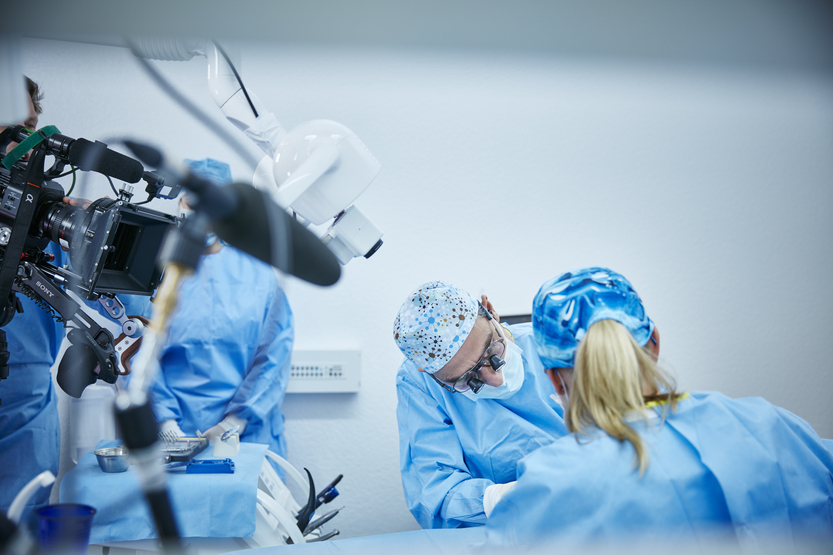 Last year, viewers of the Dentsply Sirona live stream were able to experience first-hand how implant dentists and long-term Cerec user, Dr Gerhard Werling, installed two Dentsply Sirona Xive implants using a Sicat Optiguide surgical guide, from his practice in Bellheim, Germany.
Last year, viewers of the Dentsply Sirona live stream were able to experience first-hand how implant dentists and long-term Cerec user, Dr Gerhard Werling, installed two Dentsply Sirona Xive implants using a Sicat Optiguide surgical guide, from his practice in Bellheim, Germany.
The live stream was accompanied by commentary from dentist Dr Frank Zastrow, giving background information on the working steps, the procedure and the products used during the surgery.
‘Taking colleagues and experts from the dental community with us live into the operating room is very exciting for us,’ explained Dr Werling. ‘We wanted to show how easily they can improve their workflow and treatment success even more.’
Guided surgery
To do so, he used CBCT scans of his Orthophos XG 3D X-ray system and Optiguide surgical guides from Sicat.
‘Without looking into the third dimension, we are often met with surprises during procedures,’ he explained.
‘It shows that the position and angle of the implant does not allow optimum prosthetic or aesthetic treatment. Thanks to prior planning, which is used as the basis for the surgical guide, I can be sure that the implant will fit exactly as I want.’
There are various methods for guided implant surgery that clinicians can choose according to practice equipment available to them. It is particularly useful if a clinician has the Cerec restoration system for computer-aided dental prostheses. An optical impression of the tooth and the surrounding areas is made with the Cerec Omnicam and the prosthetic proposal is designed using Cerec software.
The CAD data is then imported into the Galileos implant planning software and merged with the 3D X-ray data of a Dentsply Sirona CBCT system. This enables virtual coordination of the surgical and prosthetic planning.
The user then uploads the digital planning data to Sicat for the creation of the surgical guide. With the combination of 3D imaging and Cerec, clinicians can place implants quickly and safely in a simple procedure.
The patient also benefits from the shorter procedure time. They appreciate that they can visualise the plan, which increases their acceptance and keeps them calmer when they go in for the procedure. In addition, the guided procedure is a comfortable experience for patients because the surgery is minimally invasive and causes less trauma.
Ensuring precision and safety
Viewers witnessed these benefits during the live operation.
Dr Werling said: ‘We have heard only good things from patients who were treated with this method, and have noticed that, compared to classic explanations, without 3D visualisation of the plans, more patients are undergoing implant treatments.
‘I believe guided processes are the future of implant dentistry. They ensure greater precision and a higher degree of safety, particularly in difficult cases. By sharing our experiences with the community, we take dental art to a new level. We owe this to our patients.’
If you missed the live stream you can watch the implant procedure video on the Dentsply Sirona Youtube channel and on Facebook.
Let’s block ads! (Why?)





